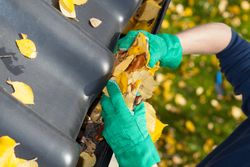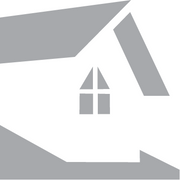
In the wake of severe weather events, you may notice branches, seeds, and leafy debris on your rooftop. In addition to diminishing curb appeal, leaving organic materials on your residential roofing may cause property damage and safety hazards. Here’s a helpful guide on how to clean your after storms.
Potential Problems
When leafy debris collects on the roof after storms, it may clog the gutter system, which prevents water from diverting away from your property. As a result, water will pool on the roof and enter your home through small cracks, crevices, and holes.
As leaves and organic matter decompose on the roof, mold and mildew will develop, resulting in unsightly discoloration and potential health issues. Leaving tree debris on residential roofing also creates a breeding ground for insects, rodents, and wildlife that might find their way into your home and damage your property.
Cleaning Tips
 After intense storms, visually inspect your roof for fallen branches, leaves, and other materials. If you notice any of these items, use a long-handled broom to remove as much debris as you can, or expedite the process with a leaf blower.
After intense storms, visually inspect your roof for fallen branches, leaves, and other materials. If you notice any of these items, use a long-handled broom to remove as much debris as you can, or expedite the process with a leaf blower.
Leave any debris that’s out of reach to a professional residential roofing contractor. They have the safety training required to climb on top of roofs and will use professional brushes to clear debris along with emulsifying solutions to prevent mold buildup. Additionally, they’ll clear your gutters so water moves away from your home.
Keep your roof in excellent condition with routine maintenance from Al Rezentes Roofing. For over 30 years, this residential roofing contractor has provided installations, coatings, repairs, and replacement services to clients across Oahu. Call (808) 230-8005 to get a quote on a new roof or book a service appointment. Visit them online to learn more about how they’ll keep your property dry and safe.
About the Business
Have a question? Ask the experts!
Send your question

